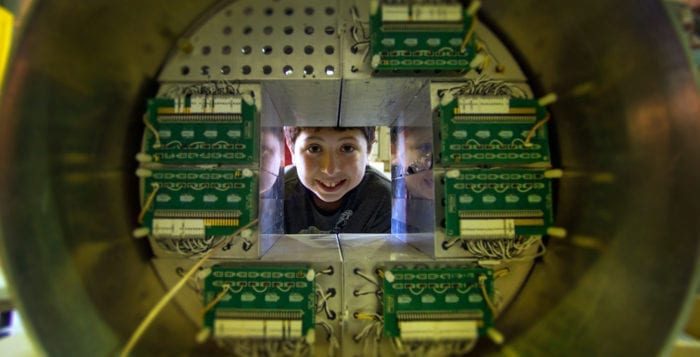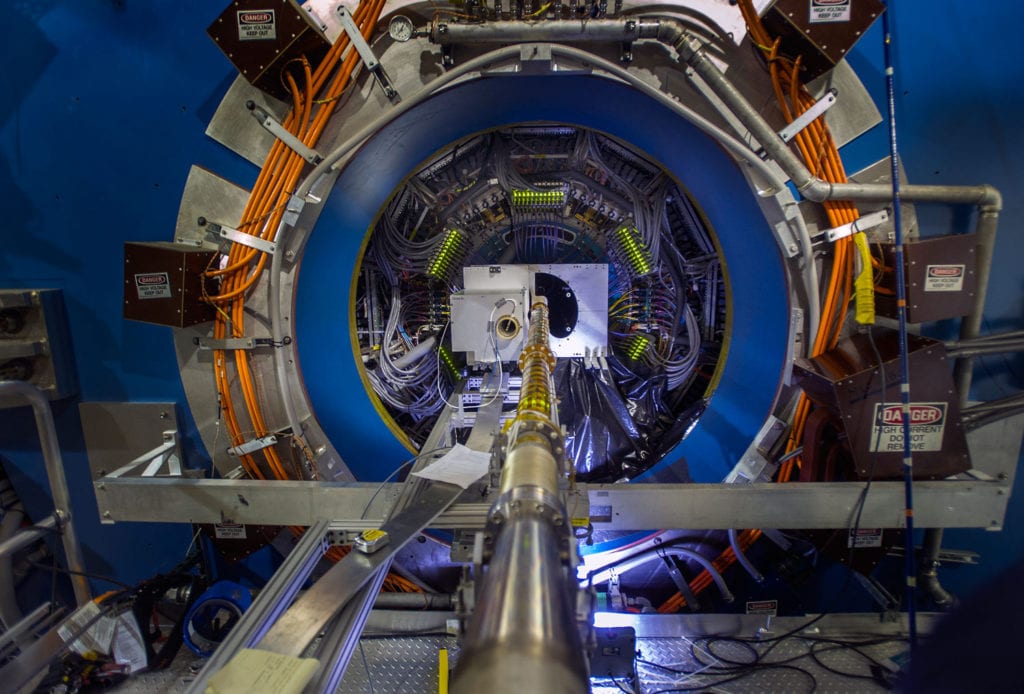North Shore residents ponder the universe at Brookhaven National Lab

By Colm Ashe
Hundreds of North Shore residents gathered at Brookhaven National Laboratory in Upton July 31 for the last Summer Sunday of the season, a program which offers the public a chance to immerse themselves in the wide range of scientific endeavors that take place at the lab.
The final Summer Sunday’s events focused on a Relativistic Heavy Ion Collider. The RHIC is the modern culmination of an age-old inquiry into the origins of the universe and the only operating particle collider in the United States.
The day’s events gave the public a chance to witness the enormity of the project, a size measured not only in square mileage, but also in international collaborators. Thousands of scientists from all over the world, even those on opposite sides of warring nations, have been brought together by this quest to unlock the secrets of matter.

From the main control room, scientists at BNL send ions spinning around a 2.5-mile circular track and smash them together at a velocity close to the speed of light. When the ions collide, they create a small explosion that lasts for an extremely brief time span—one billionth of one billionth of one one millionth of a second.
During the explosion, scientists get a finite window into the birth of the universe, measuring one billionth of one millionth of a meter across. In order to study this small speck of short-lived matter, the remnants of these collisions are recorded in two detectors, STAR and PHENIX. This data is then examined by some of world’s top minds.
According to Physicist Paul Sorensen, this collision re-creates “the conditions of the early universe” so scientists can “study the force that holds together that matter as well as all of the matter that exists in the visible universe today.”
What is this force that binds the universe together? At the event, renowned physicist and deputy chair of BNL’s physics department Howard Gordon addressed this puzzling question. His lecture provided the audience some background on the history of this quest, as well as an update on the discovery of the elusive particle that started it all—the Higgs boson.
Though theories regarding the Higgs field — a field of energy presumed to give particles their mass — have been around since the 1960s, it took five decades to finally find the Higgs boson. As reported by TBR’s very own Daniel Dunaief, this “God particle” was finally discovered in 2012 at Geneva’s Large Hadron Collider, the world’s first ever particle accelerator.
This was the puzzle piece scientists worldwide had been counting on to validate their theory about the origins of matter. According to Gordon, “atoms, therefore life, would not form without the Higgs boson.”
Since this discovery, a vast global network of scientists and centers, including BNL, has been created to sift through the enormous amount of data generated by the Large Hadron Collider. The LHC produces enough data “to fill more than 1,000 one-terabyte hard drives — more than the information in all the world’s libraries,” according to theoretical physicist Lawrence M. Krauss.
After Gordon’s lecture, some of the most promising physicists in the U.S. led guests on a tour of the facilities which process this data, along with an up-close introduction to RHIC, STAR and PHENIX, all of which are undergoing maintenance this summer.






